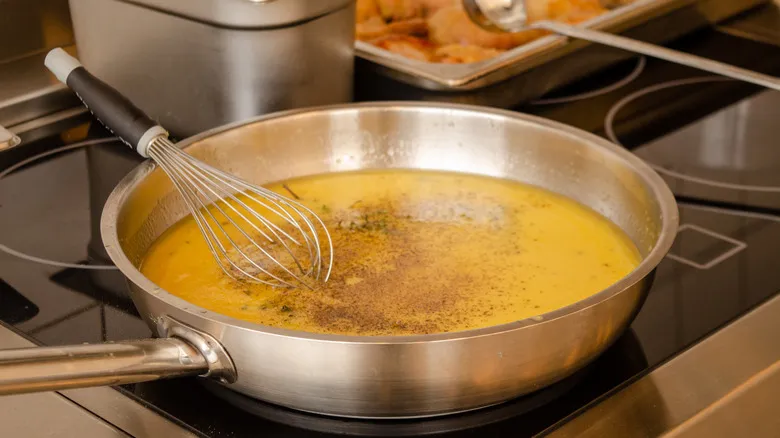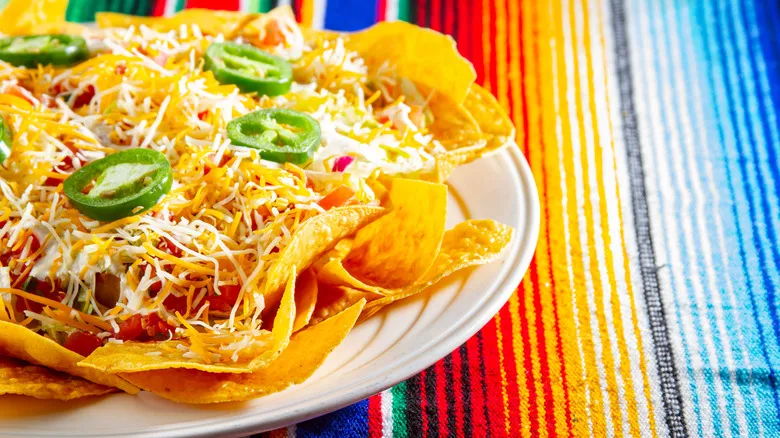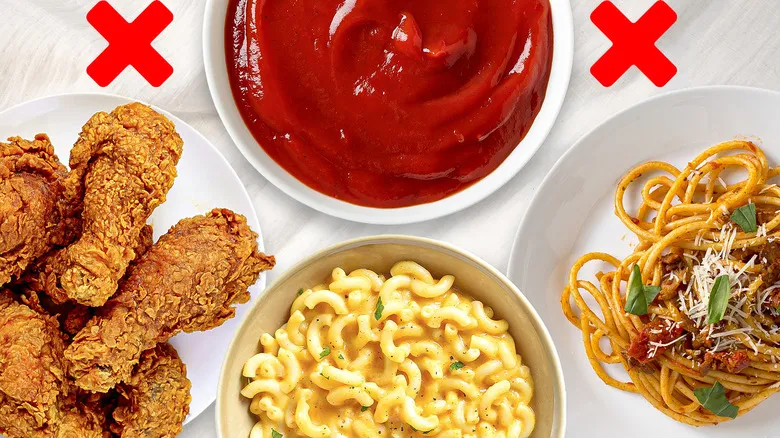Why a pan sauce breaks so easily and how to fix it

Creating the ideal pan sauce hinges on achieving the right balance of ingredients. A sauce that has broken typically indicates that too much water has evaporated, which can happen quickly. When this occurs, the fat has less space to distribute evenly, leading to pooling that not only appears unappetizing but also affects the flavor negatively. Factors that can contribute to a broken sauce include an excessively hot pan or insufficient water or stock added initially. Additionally, if the fat is warm or at room temperature, its water content may evaporate more rapidly.
If you find that too much water has evaporated and your pan sauce has broken, you can remedy the situation by adding some water or stock to help re-suspend the fat droplets. Begin with about ¼ cup and increase the heat until the sauce reaches a simmer. Continuously stir to help distribute the fat and re-emulsify the sauce. Continue cooking or adding more liquid as necessary until the sauce achieves a glossy, appetizing appearance.
It's important to note that a pan sauce can reach a point of no return. If the milk solids from your butter or cream have burned due to excessive heat, it may be best to grab your favorite steak sauce from the refrigerator instead.
Tips for making the perfect pan sauce

Creating an exceptional pan sauce involves a few key secrets, particularly regarding the ingredients you select. The process begins with cooking a piece of meat—any type will suffice: chicken, pork, beef, lamb, and more. However, it's essential to sear your meat in a skillet that has some stickiness, like cast iron. Once you take the meat out of the pan to let it rest, you should notice some browned bits (known as fond) clinging to the bottom. After draining off some excess fat, introduce a few aromatics such as garlic, shallots, ginger, cumin, or paprika, and allow them to release their flavors in the remaining drippings.
Next comes the exciting part: deglazing the fond with your choice of alcohol. White wine pairs nicely with chicken, while red wine complements beef or lamb; alternatively, you might experiment with sherry or vermouth. Allow the alcohol to reduce significantly before adding any additional liquid, ensuring your pan sauce captures its sweetness rather than its sharpness. Then, whisk in your preferred stock or even water.
Finally, we arrive at the more daunting step: emulsification. Incorporate cold butter or heavy cream directly from the fridge by whisking it in. When your sauce achieves a rich, opaque, and creamy consistency, it’s time to enhance the flavor with finishing touches like parsley, capers, black pepper, a squeeze of lemon juice, or a touch of Dijon or spicy brown mustard. And remember, if your pan sauce separates, there’s an easy fix.
Recommended

The Hands-Down Best Cheese For Nachos

Are Beans And Legumes The Same Thing?

Why You Should Avoid Putting Hot Liquid In A Blender At All Costs

13 Foods You Should Avoid Adding Ketchup To At All Costs
Next up

